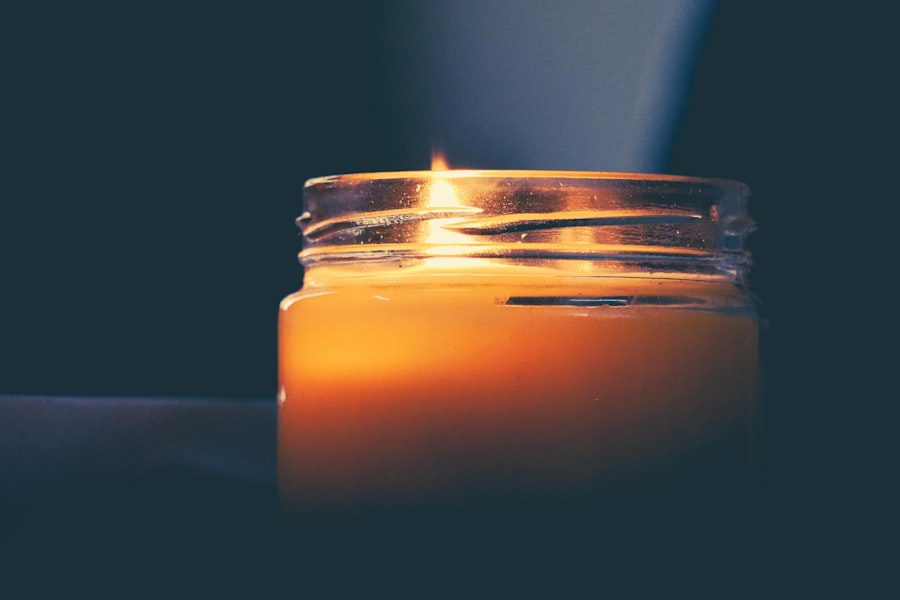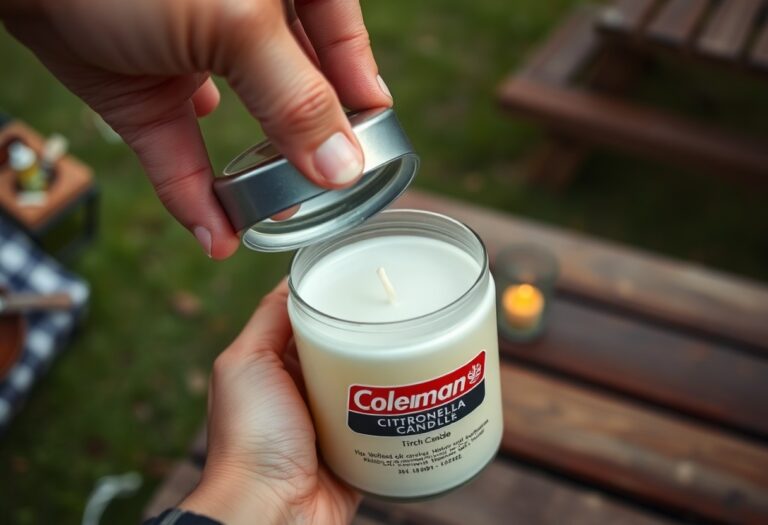Why candles smoke and how to prevent it from happening.
Candle smoking is a phenomenon that occurs when the combustion process of a candle is not efficient, leading to the production of soot. This soot is essentially unburned carbon particles that are released into the air, creating a visible smoke. The science behind this process involves the interaction of wax, wick, and oxygen.
When a candle burns, the heat from the flame melts the wax, which then vaporizes and combines with oxygen to produce heat, light, carbon dioxide, and water vapor. However, if the combustion is incomplete due to various factors, it can result in the formation of soot. The temperature of the flame plays a crucial role in this process.
A cooler flame may not provide enough heat to fully vaporize the wax, leading to incomplete combustion and smoke production. Additionally, the type of wax used can influence how cleanly a candle burns. For instance, paraffin wax, which is derived from petroleum, can produce more soot compared to natural waxes like soy or beeswax.
Understanding these scientific principles is essential for candle enthusiasts who wish to enjoy a clean-burning experience without the nuisance of smoke.
Factors that contribute to candle smoking
Several factors can contribute to the smoking of candles, and understanding these can help users mitigate the issue effectively. One primary factor is the wick size and material. A wick that is too large for the candle’s diameter can create an excessively large flame, leading to increased soot production.
Conversely, a wick that is too small may not generate enough heat to melt the wax adequately, resulting in incomplete combustion. The choice of wick material also matters; cotton wicks tend to burn cleaner than those made from other materials. Another significant factor is the quality of the wax itself.
Low-quality paraffin wax often contains impurities that can lead to smoking when burned. Additionally, additives used in scented candles can also contribute to smoke production. Fragrance oils and dyes may not burn as cleanly as pure wax, especially if they are not formulated for candle making.
Environmental conditions such as drafts or poor ventilation can exacerbate smoking issues by disrupting the flame’s stability and oxygen supply, further complicating the combustion process.
Choosing the right type of candle to prevent smoking
Selecting the right type of candle is crucial for achieving a smoke-free burn. Natural wax candles, such as those made from soy, beeswax, or palm wax, are generally better options compared to traditional paraffin candles. Soy wax, for instance, is known for its clean-burning properties and lower soot production.
It has a lower melting point than paraffin, which allows for a more efficient combustion process. Beeswax candles are another excellent choice; they burn longer and cleaner while emitting negative ions that can purify the air. When choosing scented candles, it is essential to consider the quality of the fragrance oils used.
High-quality candles often use essential oils or well-formulated synthetic fragrances that are designed for optimal burning. Additionally, look for candles that specify they are “soot-free” or “smoke-free” on their labels. These products are typically crafted with attention to wick size and wax quality, ensuring a cleaner burn.
By being discerning in your selection of candles, you can significantly reduce the likelihood of encountering smoke during use.
Trimming the wick for a smoke-free burn
Wick maintenance is one of the simplest yet most effective ways to prevent candle smoking. Trimming the wick before each use is essential for ensuring a clean burn. Ideally, the wick should be trimmed to about 1/4 inch in length.
A longer wick can lead to a larger flame that produces more soot and smoke. When trimming, it’s important to use sharp scissors or wick trimmers to achieve a clean cut; ragged edges can cause uneven burning and further contribute to smoke production. In addition to trimming before lighting, it’s also advisable to monitor the wick during use.
If you notice that the flame is flickering or producing excessive smoke, it may be an indication that the wick needs trimming again. Regular maintenance not only enhances the candle’s performance but also prolongs its lifespan by preventing excessive soot buildup on both the candle and surrounding surfaces.
Proper candle placement for reduced smoke
The placement of candles within a space can significantly impact their burning characteristics and potential for smoking. Candles should be placed in areas with good airflow but away from direct drafts or vents that could disturb the flame. A stable environment allows for consistent combustion by ensuring that the flame receives an adequate supply of oxygen without being extinguished or disrupted by gusts of wind.
Additionally, avoid placing candles near flammable materials or surfaces that could catch fire from an errant spark or excessive heat. It’s also wise to keep candles away from corners or enclosed spaces where smoke could accumulate and create an unpleasant atmosphere. By strategically positioning candles in open areas with proper ventilation, users can enhance their burning experience while minimizing smoke production.
Using candle accessories to prevent smoking
Candle accessories can play a vital role in promoting a clean burn and reducing smoke production. One popular accessory is a candle snuffer, which allows users to extinguish candles without creating smoke or splattering wax. Unlike blowing out a candle, which can disturb the flame and release soot into the air, using a snuffer ensures that the flame is extinguished gently and cleanly.
Another useful accessory is a wick dipper, which allows users to push the wick into the melted wax pool before pulling it back up again. This technique not only extinguishes the flame without smoke but also helps to coat the wick in wax, preventing it from becoming too long during subsequent burns. Additionally, using candle holders designed with proper ventilation can help maintain an optimal burning environment by allowing air circulation while containing any potential drips or spills.
Tips for extinguishing candles to minimize smoke
The method used to extinguish candles can significantly affect whether they produce smoke upon being snuffed out. As previously mentioned, using a candle snuffer is one of the best practices for minimizing smoke production during extinguishing. This tool allows for a controlled extinguishing process that prevents sudden bursts of smoke from escaping into the air.
If a snuffer is not available, gently pinching the wick between your fingers can also be effective; however, caution should be exercised to avoid burns from hot wax or embers. Another technique involves using a spoon or other flat object to cover the flame briefly before lifting it away; this method deprives the flame of oxygen without creating excessive smoke. Regardless of the method chosen, allowing the wick to cool before relighting will help ensure a cleaner burn during subsequent uses.
Troubleshooting common candle smoking issues
Despite taking precautions, some users may still encounter smoking issues with their candles. Identifying common problems can help in troubleshooting effectively. If a candle produces smoke consistently despite proper wick trimming and placement, it may be due to an oversized wick or low-quality wax.
In such cases, switching to a different brand or type of candle may be necessary. Another common issue arises when candles are burned for extended periods without breaks. Prolonged burning can lead to excessive soot buildup on both the wick and surrounding surfaces.
To combat this, it’s advisable to follow recommended burn times—typically around 1 hour per inch of diameter—to allow for proper melting and combustion without overloading the wick. In conclusion, understanding the science behind candle smoking and implementing best practices can significantly enhance your candle-burning experience while minimizing unwanted smoke production. By paying attention to factors such as wick maintenance, candle selection, placement, and extinguishing methods, users can enjoy their candles without compromising air quality or aesthetic appeal.
If you are interested in learning more about candles and how to properly burn them, you may want to check out the article How to Burn Pillar Candle on Crafters Buzz. This article provides helpful tips and techniques for burning pillar candles efficiently and safely. Additionally, you can explore more articles on candle making and the art of candle lighting on Crafters Buzz’s website About and The Candle Renaissance: Rediscovering Candle Lighting. These resources offer valuable insights into the history and significance of candle lighting, as well as tips for creating a warm and inviting atmosphere with candles.
FAQs
What causes candles to smoke?
Candles smoke when the wick is too long, the candle is in a drafty area, or the wick is not properly trimmed.
How can I prevent candles from smoking?
To prevent candles from smoking, make sure to trim the wick to 1/4 inch before lighting, keep the candle away from drafts, and avoid burning the candle for long periods of time.















